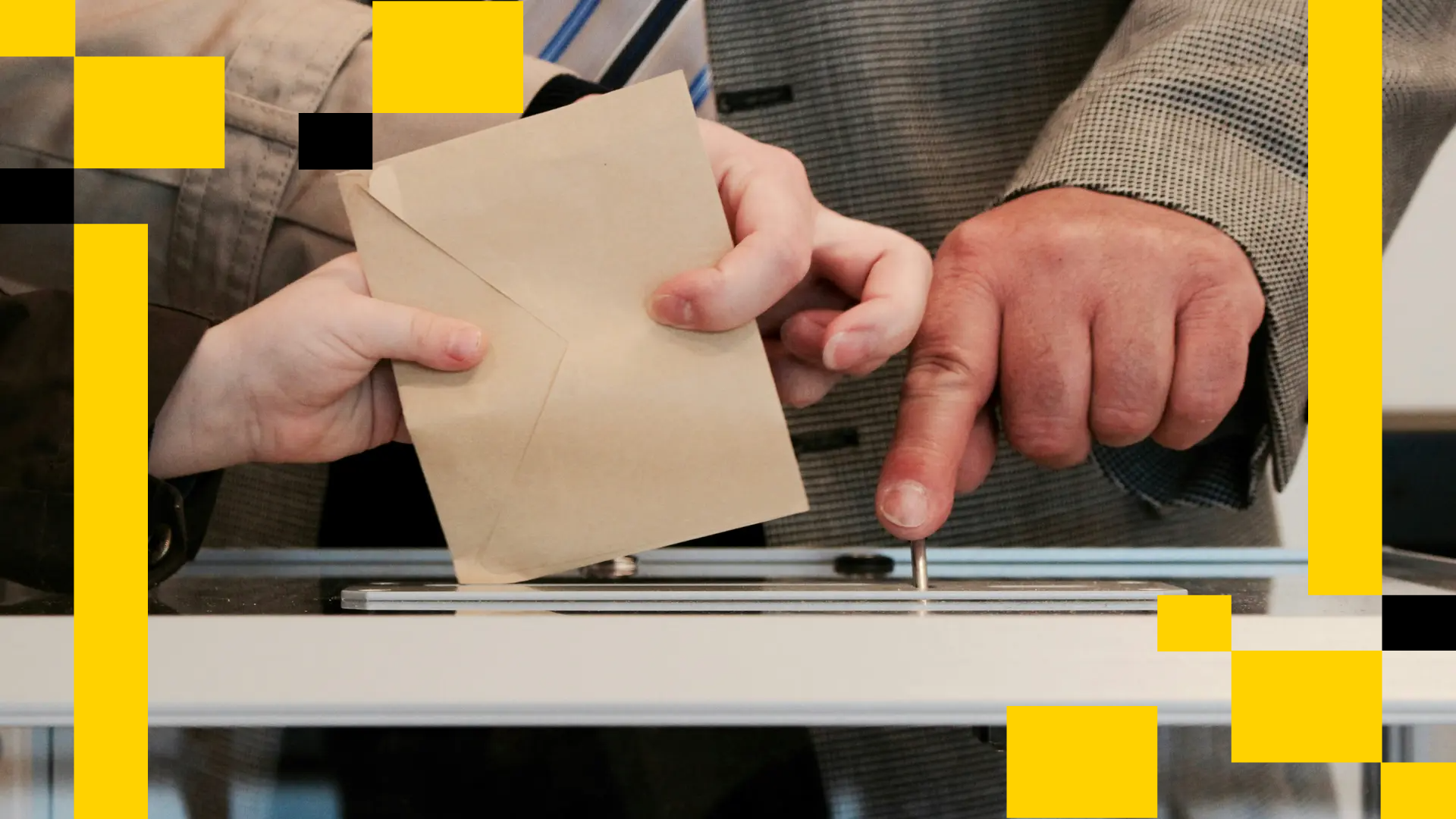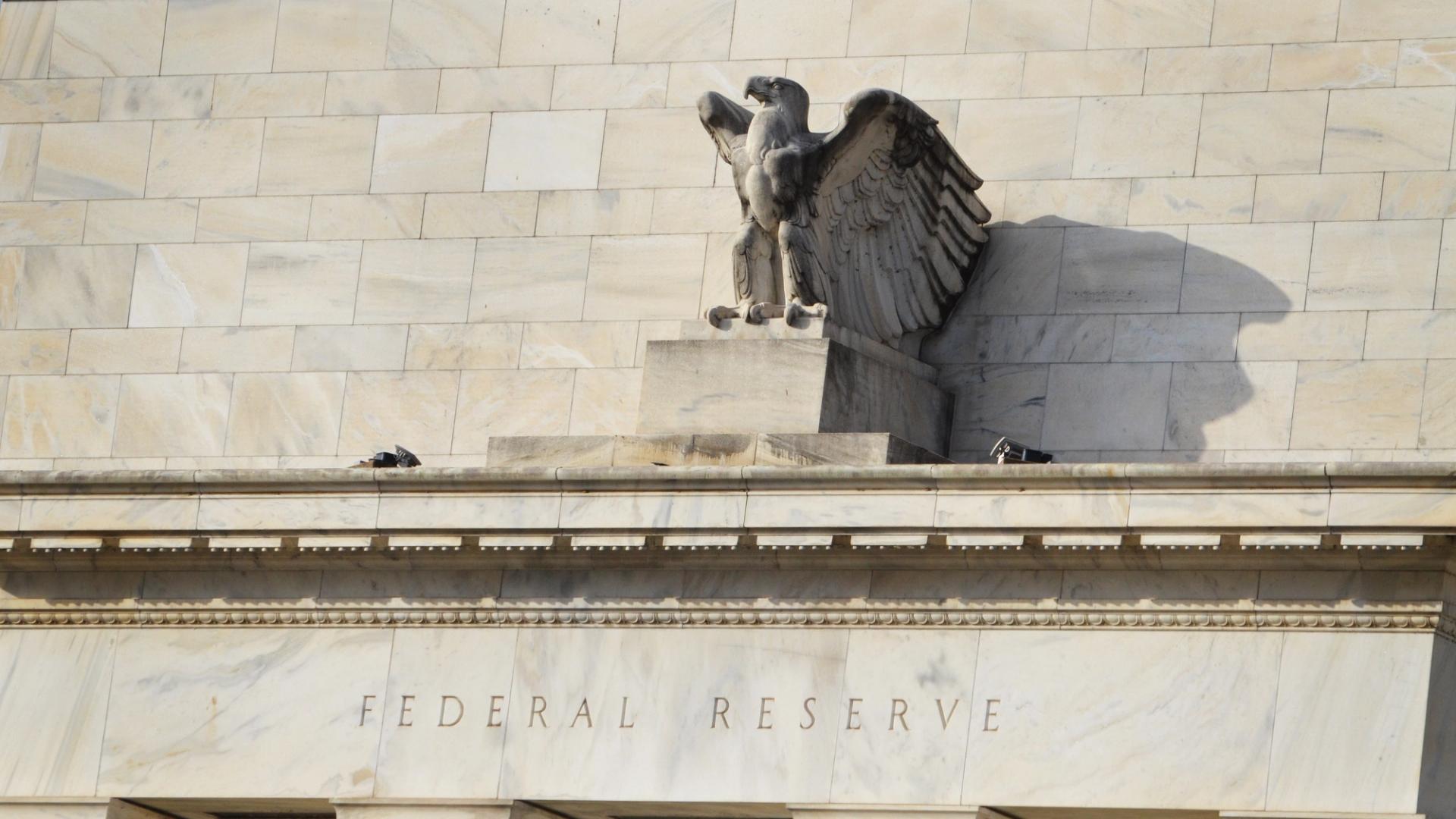Uncategorized
Why Emerging Economies Need Strategic Crypto Reserves

You’ve probably heard this at a dinner party: “If only we had bought Bitcoin ten years ago.” Now imagine that conversation echoing in the corridors of a central bank, where the stakes are a nation missing one of the most asymmetric financial opportunities of the century.
For emerging economies — countries like India, Brazil, Indonesia, South Africa, Nigeria, Thailand, or Vietnam — strategic exposure to cryptocurrencies is essential for future economic resilience. They collectively represent over 40% of the global population and approximately 25% of global GDP, yet they remain vulnerable to external economic shocks, including currency fluctuations, trade disruptions, and more. Today, their sovereign reserves remain heavily reliant on traditional assets like gold and foreign exchange. But those aren’t sufficient hedges in a rapidly digitizing world.
Cryptocurrencies aren’t an experiment anymore. While Bitcoin is the most widely adopted, making it the primary example in this discussion, the broader argument applies to cryptocurrencies as a whole. The Bitcoin network has been operational for over 99.98% of the time since its inception in 2009. Cryptocurrencies have survived wars, regulatory crackdowns, and multiple financial crises. Over the last decade, bitcoin has appreciated nearly 200X, far outpacing tech giants like NVIDIA or Apple.
The crypto space, no denying, has faced scams, rug pulls, and bad actors. This is common in virtually any financial system — think early stock markets or banking. That’s why smart regulation is critical. Countries like Singapore, Japan, and Switzerland have already struck a balance between consumer protection and innovation, offering models for others. But these risks don’t negate crypto’s core appeal — they demand careful governance.
Diversification is key. Ask any central banker, fund manager, or financial advisor: you don’t put all your eggs in one basket, and you certainly don’t bet the future of an economy on a single asset class. In a world that’s rapidly digitizing, ignoring digital assets like cryptocurrencies is a mistake. These assets tend to have little correlation with how other traditional assets perform, making bitcoin a strong hedge against economic turbulence.
We’re seeing entire publicly listed companies built around bitcoin as a core asset. Take Michael Saylor’s Strategy, which started as a software firm and now holds over 506,137 BTC (approximately $42 billion as of writing). Countries like El Salvador have adopted Bitcoin as legal tender. Vietnam, India, and Thailand rank among the top 10 countries globally for cryptocurrency adoption already. EAEs must follow this shift or fall behind.
Bitcoin isn’t the new digital gold — it serves a very different role. In many cultures, more so in mine, we Indians love our gold. We hoard it, gift it, and trust it as a store of value. Central banks across the world have been buying gold at a record pace in recent years. But gold wasn’t always the safe bet we think it is today — back in the 1980s, its price crashed by 60% before bouncing back.
Bitcoin brings new utility: it can be transferred anywhere in the world in minutes, divided into microscopic fractions, and secured with cryptographic protocols. Gold and Bitcoin share fundamental traits — they’re scarce, resilient, and hedge against uncertainty — but gold preserves value traditionally, while bitcoin expands possibilities digitally. They don’t replace each other; they work together.
Critics often dismiss crypto as mere speculation, but its utility is real. Major companies like Microsoft and Starbucks now accept bitcoin and stablecoins for transactions. U.S. bitcoin ETFs have attracted over $12 billion in institutional inflows within months. Crypto enables faster, cheaper remittances, cutting global fees from 6.4% to under 1%, saving billions for developing economies. With over $100 billion locked in DeFi protocols, it’s clear that the future of finance is already being built on blockchain.
Emerging economies should take a strategic, forward-looking step toward economic resilience. A 1-2% allocation in digital assets is smart, not a gamble. Track its performance, take cues from early movers like the U.S., El Salvador, and Strategy, and refine the approach as you go. Encourage financial institutions to experiment with crypto-backed financial instruments in a limited way. Proactive regulatory frameworks are vital to foster innovation while ensuring stability.
Countries must position themselves for the future. Holding digital assets reduces reliance on external financial systems and insulates them from geopolitical and monetary shifts. We’ve seen this playbook before — these countries weren’t the first to embrace digital payments, yet they built world-class infrastructure like India’s UPI, Brazil’s PIX, and Nigeria’s NIBSS. The same leadership is possible in crypto reserves. With the global crypto market nearing $3 trillion and institutional adoption accelerating, the question isn’t if this shift will happen—it’s who will lead it.
Emerging economies can start building a strategic reserve today or hear in five years at another dinner party in five years, “If only we had bought bitcoin in 2025.” The time is now.
Uncategorized
Asia Morning Briefing: Native Markets Wins Right to Issue USDH After Validator Vote

Good Morning, Asia. Here’s what’s making news in the markets:
Welcome to Asia Morning Briefing, a daily summary of top stories during U.S. hours and an overview of market moves and analysis. For a detailed overview of U.S. markets, see CoinDesk’s Crypto Daybook Americas.
Hyperliquid’s validator community has chosen Native Markets to issue USDH, ending a weeklong contest that drew proposals from Paxos, Frax, Sky (ex-MakerDAO), Agora, and others.
Native Markets, co-founded by former Uniswap Labs president MC Lader, researcher Anish Agnihotri, and early Hyperliquid backer Max Fiege, said it will begin rolling out USDH “within days,” according to a post by Fiege on X.
According to onchain trackers, Native Markets’ proposal took approximately 70% of validators’ votes, while Paxos took 20%, and Ethena came in at 3.2%.
The staged launch starts with capped mints and redemptions, followed by a USDH/USDC spot pair before caps are lifted.
USDH is designed to challenge Circle’s USDC, which currently dominates Hyperliquid with nearly $6 billion in deposits, or about 7.5% of its supply. USDC and other stablecoins will remain supported if they meet liquidity and HYPE staking requirements.
Most rival bidders had promised to channel stablecoin yields back to the ecosystem with Paxos via HYPE buybacks, Frax through direct user yield, and Sky with a 4.85% savings rate plus a $25 million “Genesis Star” project.
Native Markets’ pitch instead stressed credibility, trading experience, and validator alignment.
Market Movement
BTC: BTC has recently reclaimed the $115,000 level, helped by inflows into ETFs, easing U.S. inflation data, and growing expectations for interest rate cuts. Also, technical momentum is picking up, though resistance sits around $116,000, according to CoinDesk’s market insights bot.
ETH: ETH is trading above $4600. The price is being buoyed by strong ETF inflows.
Gold: Gold continues to trade near record highs as traders eye dollar weakness on expected Fed rate cuts.
Elsewhere in Crypto:
Uncategorized
BitMEX Co-Founder Arthur Hayes Sees Money Printing Extending Crypto Cycle Well Into 2026

Arthur Hayes believes the current crypto bull market has further to run, supported by global monetary trends he sees as only in their early stages.
Speaking in a recent interview with Kyle Chassé, a longtime bitcoin and Web3 entrepreneur, the BitMEX co-founder and current Maelstrom CIO argued that governments around the world are far from finished with aggressive monetary expansion.
He pointed to U.S. politics in particular, saying that President Donald Trump’s second term has not yet fully unleashed the spending programs that could arrive from mid-2026 onward. Hayes suggested that if expectations for money printing become extreme, he may consider taking partial profits, but for now he sees investors underestimating the scale of liquidity that could flow into equities and crypto.
Hayes tied his outlook to broader geopolitical shifts, including what he described as the erosion of a unipolar world order. In his view, such periods of instability tend to push policymakers toward fiscal stimulus and central bank easing as tools to keep citizens and markets calm.
He also raised the possibility of strains within Europe — even hinting that a French default could destabilize the euro — as another factor likely to accelerate global printing presses. While he acknowledged these policies eventually risk ending badly, he argued that the blow-off top of the cycle is still ahead.
Turning to bitcoin, Hayes pushed back on concerns that the asset has stalled after reaching a record $124,000 in mid-August.
He contrasted its performance with other asset classes, noting that while U.S. stocks are higher in dollar terms, they have not fully recovered relative to gold since the 2008 financial crisis. Hayes pointed out that real estate also lags when measured against gold, and only a handful of U.S. technology giants have consistently outperformed.
When measured against bitcoin, however, he believes all traditional benchmarks appear weak.
Hayes’ message was that bitcoin’s dominance becomes even clearer once assets are viewed through the lens of currency debasement.
For those frustrated that bitcoin is not posting fresh highs every week, Hayes suggested that expectations are misplaced.
In his telling, investors from the traditional world and those in crypto actually share the same premise: governments and central banks will print money whenever growth falters. Hayes says traditional finance tends to express this view by buying bonds on leverage, while crypto investors hold bitcoin as the “faster horse.”
His conclusion is that patience is essential. Hayes argued that the real edge of holding bitcoin comes from years of compounding outperformance rather than short-term speculation.
Coupled with what he sees as an inevitable wave of money creation through the rest of the decade, he believes the present crypto cycle could stretch well into 2026, far from exhausted.
Uncategorized
Bitcoin Bulls Bet on Fed Rate Cuts To Drive Bond Yields Lower, But There’s a Catch

On Sept. 17, the U.S. Federal Reserve (Fed) is widely expected to cut interest rates by 25 basis points, lowering the benchmark range to 4.00%-4.25%. This move will likely be followed by more easing in the coming months, taking the rates down to around 3% within the next 12 months. The fed funds futures market is discounting a drop in the fed funds rate to less than 3% by the end of 2026.
Bitcoin (BTC) bulls are optimistic that the anticipated easing will push Treasury yields sharply lower, thereby encouraging increased risk-taking across both the economy and financial markets. However, the dynamics are more complex and could lead to outcomes that differ significantly from what is anticipated.
While the expected Fed rate cuts could weigh on the two-year Treasury yield, those at the long end of the curve may remain elevated due to fiscal concerns and sticky inflation.
Debt supply
The U.S. government is expected to increase the issuance of Treasury bills (short-term instruments) and eventually longer-duration Treasury notes to finance the Trump administration’s recently approved package of extended tax cuts and increased defense spending. According to the Congressional Budget Office, these policies are likely to add over $2.4 trillion to primary deficits over ten years, while Increasing debt by nearly $3 trillion, or roughly $5 trillion if made permanent.
The increased supply of debt will likely weigh on bond prices and lift yields. (bond prices and yields move in the opposite direction).
«The U.S. Treasury’s eventual move to issue more notes and bonds will pressure longer-term yields higher,» analysts at T. Rowe Price, a global investment management firm, said in a recent report.
Fiscal concerns have already permeated the longer-duration Treasury notes, where investors are demanding higher yields to lend money to the government for 10 years or more, known as the term premium.
The ongoing steepening of the yield curve – which is reflected in the widening spread between 10- and 2-year yields, as well as 30- and 5-year yields and driven primarily by the relative resilience of long-term rates – also signals increasing concerns about fiscal policy.
Kathy Jones, managing director and chief income strategist at the Schwab Center for Financial Research, voiced a similar opinion this month, noting that «investors are demanding a higher yield for long-term Treasuries to compensate for the risk of inflation and/or depreciation of the dollar as a consequence of high debt levels.»
These concerns could keep long-term bond yields from falling much, Jones added.
Stubborn inflation
Since the Fed began cutting rates last September, the U.S. labor market has shown signs of significant weakening, bolstering expectations for a quicker pace of Fed rate cuts and a decline in Treasury yields. However, inflation has recently edged higher, complicating that outlook.
When the Fed cut rates in September last year, the year-on-year inflation rate was 2.4%. Last month, it stood at 2.9%, the highest since January’s 3% reading. In other words, inflation has regained momentum, weakening the case for faster Fed rate cuts and a drop in Treasury yields.
Easing priced in?
Yields have already come under pressure, likely reflecting the market’s anticipation of Federal Reserve rate cuts.
The 10-year yield slipped to 4% last week, hitting the lowest since April 8, according to data source TradingView. The benchmark yield has dropped over 60 basis points from its May high of 4.62%.
According to Padhraic Garvey, CFA, regional head of research, Americas at ING, the drop to 4% is likely an overshoot to the downside.
«We can see the 10yr Treasury yield targeting still lower as an attack on 4% is successful. But that’s likely an overshoot to the downside. Higher inflation prints in the coming months will likely cause long-end yields some issues, requiring a significant adjustment,» Garvey said in a note to clients last week.
Perhaps rate cuts have been priced in, and yields could bounce back hard following the Sept. 17 move, in a repeat of the 2024 pattern. The dollar index suggests the same, as noted early this week.
Lesson from 2024
The 10-year yield fell by over 100 basis points to 3.60% in roughly five months leading up to the September 2024 rate cut.
The central bank delivered additional rate cuts in November and December. Yet, the 10-year yield bottomed out with the September move and rose to 4.57% by year-end, eventually reaching a high of 4.80% in January of this year.
According to ING, the upswing in yields following the easing was driven by economic resilience, sticky inflation, and fiscal concerns.
As of today, while the economy has weakened, inflation and fiscal concerns have worsened as discussed earlier, which means the 2024 pattern could repeat itself.
What it means for BTC?
While BTC rallied from $70,000 to over $100,000 between October and December 2024 despite rising long-term yields, this surge was primarily fueled by optimism around pro-crypto regulatory policies under President Trump and growing corporate adoption of BTC and other tokens.
However, these supporting narratives have significantly weakened looking back a year later. Consequently, the possibility of a potential hardening of yields in the coming months weighing over bitcoin cannot be dismissed.
Read: Here Are the 3 Things That Could Spoil Bitcoin’s Rally Towards $120K
-

 Business11 месяцев ago
Business11 месяцев ago3 Ways to make your business presentation more relatable
-

 Fashion11 месяцев ago
Fashion11 месяцев agoAccording to Dior Couture, this taboo fashion accessory is back
-

 Entertainment11 месяцев ago
Entertainment11 месяцев ago10 Artists who retired from music and made a comeback
-

 Entertainment11 месяцев ago
Entertainment11 месяцев ago\’Better Call Saul\’ has been renewed for a fourth season
-

 Entertainment11 месяцев ago
Entertainment11 месяцев agoNew Season 8 Walking Dead trailer flashes forward in time
-

 Business11 месяцев ago
Business11 месяцев ago15 Habits that could be hurting your business relationships
-

 Entertainment11 месяцев ago
Entertainment11 месяцев agoMeet Superman\’s grandfather in new trailer for Krypton
-

 Entertainment11 месяцев ago
Entertainment11 месяцев agoDisney\’s live-action Aladdin finally finds its stars





